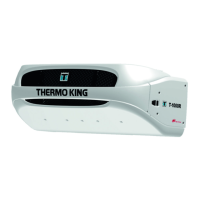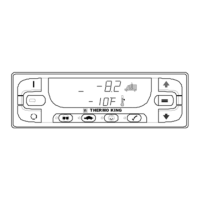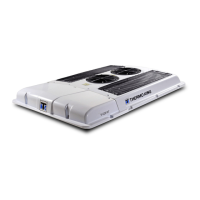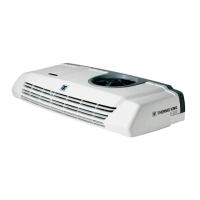Engine Maintenance
90
3. Reinstall the bleeder set screw or reinstall the
thermostat and housing.
4. On units with TK376 engines and tube and fin
radiator coils only: Continue slowly pour the
coolant into the system until you see coolant
coming out of the petcock (bleed tap) on the
radiator header. Then close the petcock.
5. Fill the coolant expansion tank to the full
mark. Then fill the overflow portion of the
tank to the full cold level.
6. Make sure that the amount of coolant that
goes back into the system is approximately
equal to the amount of coolant that came out
of the system.
7. Run the unit in low speed while watching the
unit engine temperature gauge or use a
non-contact thermometer pointed at the water
pump bleeder bolt located on the curbside of
the water pump below the thermostat.
8. When the temperature reaches 150 F (66 C)
for units with 160 F (71 C) thermostats, or
170 F (76 C) for units with 180 F (82 C)
thermostats, shut off the engine for 2 minutes
to allow the thermostat to heat soak and open
completely to purge air out of block, head, and
water pump.
Figure 165: Checking Temperature
9. After 2 minutes, re-start the engine and run it
in low speed while filling the expansion tank
to the full mark. Install the expansion tank cap
fully seated and run the unit for approximately
15 minutes. Shut off the engine and re-check
the coolant level after the unit cools down for
15 minutes.
Engine Thermostat
For the best engine operation, use a 160 F (71 C)
thermostat year round.
WARNING: Failure to follow this
procedure can result in engine damage.
Air trapped in the engine block and head
can create localized hot spots that can
cause permanent damage. Air can also
cause the thermostat and engine safety
shutdown feature to malfunction, causing
further engine damage.
1. Thermostat Housing
2. Gasket
3. Thermostat
4. Gasket
5. Water Pump
Figure 166: Water Pump Assembly and Thermostat

